Calisthenics originated as a freestyle workout mainly performed in outdoor gyms, so there are no hard and fast rules, and it’s not always clear exactly what moves and how many you need to incorporate into a workout.
This can be a problem for beginners or those who want to expand their calisthenics routine to get the best possible results.
The key to a good calisthenics workout is incorporating moves that work various muscle groups throughout the body rather than focusing on just one area. It’s also important to ensure you’re doing enough to build muscle strength and endurance.
This article will take you through the best number of sets and reps to perform a whole body calisthenics workout (depending on your ability and goals). We’ll also give you all the information you’ll need to ensure you get maximum results based on expert opinions on what it takes to reach your goals.
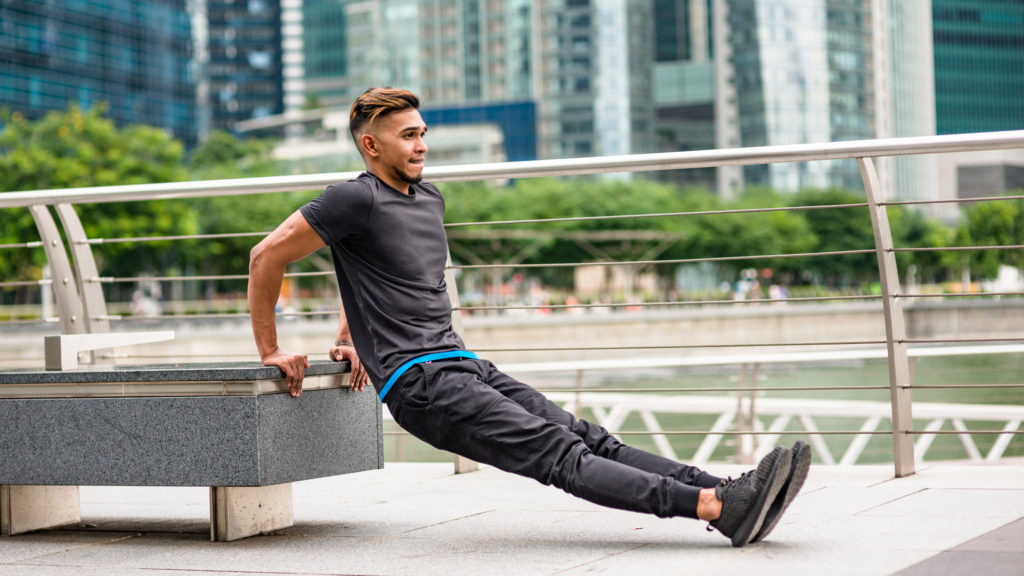
What are Sets and Reps in Calisthenics?
To be clear on the terminology we’ll be using throughout this article, a rep (short for repetition) is the number of times you perform a specific move, for example, ten reps of elevated push-ups.
A set is the number of times the reps are completed, for example, two sets of 10 elevated push-ups with a short rest between each set.
It can get a little more complicated in calisthenics because there are many varying moves and some freestyle workouts flow from one to the other without rest (which we’ll cover later in this article).
Expert Advice on the Best Rep Range in Calisthenics
The main focus for those who perform calisthenics is to build muscle strength using body weight as resistance. Calisthenics moves can be vastly different. They can be adapted to be easier for beginners or harder for those looking for more of a challenge. For example, adding extra height to a push-up increases resistance and strength-building potential.
Rather than focusing solely on muscle strength, most calisthenics athletes also focus on muscle endurance, which means the amount of time you can sustain an activity. This is particularly important for those who perform freestyle calisthenics, where one move flows into the other without rest.
There’s lots of conflicting information and no one-size-fits-all answer on how many reps and sets per exercise you should perform to build muscle endurance and strength.
The number of reps an individual may incorporate into their sets will also depend on ability, goals, and the kind of exercise they’re performing.
So, to build a routine that will get you the best results, let’s look at what the experts say about how many reps and sets you need to increase muscle endurance and strength.
- The American Council on Exercise says that reaching muscle fatigue is more important than numbers, but you should aim for around two to three sets of 12-16 reps. This is the amount aimed to increase muscular endurance using lighter resistance.
- Live Strong says that to increase muscle endurance, you should complete around two to three sets of 12 reps or more, with a short rest of 30 seconds or less between each set.
- Mayo Clinic says that to build muscle, you should perform 12-15 reps per set and exercise that muscle group until you can’t complete another rep. This way, the muscles are stimulated to go into growth mode, which can maximize results, and you only need to complete one set.
- Very Well Fit says for general fitness, you should perform one to three sets of 12-15 reps with a 30-90 second rest between sets. For endurance, you should complete three to four sets of 12 or more reps of each exercise.
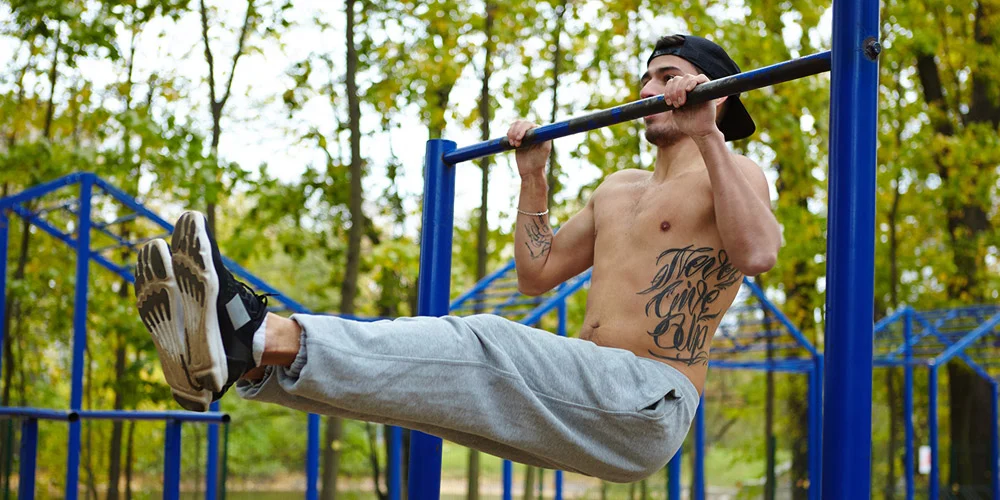
Interpreting the Expert Advice
All this conflicting advice might seem a little confusing when you’re trying to build a routine, but this is because there are no set rules in calisthenics (or any exercise), just general guidance.
The general guidance we can take from the expert advices is the average amount of reps per exercise that are good for strength building and endurance is 12-15 per set.
The amount of sets recommended by experts varies from one to four, with the average being two to three.
It’s important to note the number of reps an individual can perform will greatly depend on the kind of exercise and will need to be decreased for beginners or if the activity is high intensity.
How Long Should You Rest Between Each Set?
It’s been proven that taking a short rest between sets can improve muscular endurance and can help prevent injury.
Based on expert advice, the average recommended rest time between sets is 30 seconds or up to two minutes if someone is a beginner.
Using sets and reps in calisthenics is not essential, however, it’s a good way to ensure you’re doing enough exercise to allow muscle growth, and it helps you measure improvements over time.
Freestylers choose not to use sets and reps because it goes against the ethos of a freestyle calisthenics workout, but they could be missing out on the benefits you can get from a more rigid routine.
Performing freestyle calisthenics means there’s no opportunity to rest because this would break the flow of the workout.
The Importance of Reaching Muscle Fatigue
Another key takeaway from the experts is the importance of reaching the point of muscle fatigue, where you literally don’t have the power left to perform one more rep.
You might be thinking this is more relevant to weight training than calisthenics; however, it’s something that will happen when you perform certain exercises.
Reaching muscle fatigue is important because it means the muscle fibers in the area you’re working on are all fully engaged. It’s this engagement of the muscle fibers that help promote growth and muscle definition.
The point where you reach muscle fatigue will increase over time as you build strength and greater endurance.
For example, when a person who’s relatively new to exercise first attempts a pull-up, it’s unlikely they’ll be able to do one rep before they experience muscle fatigue.
Holding up your bodyweight through your hands and arms is hard enough, and it might take weeks or even months before you can lift your chin further than the bar.
In contrast, a calisthenics regular might be able to do 10 or 12 pull-ups before they reach the point of muscle fatigue.
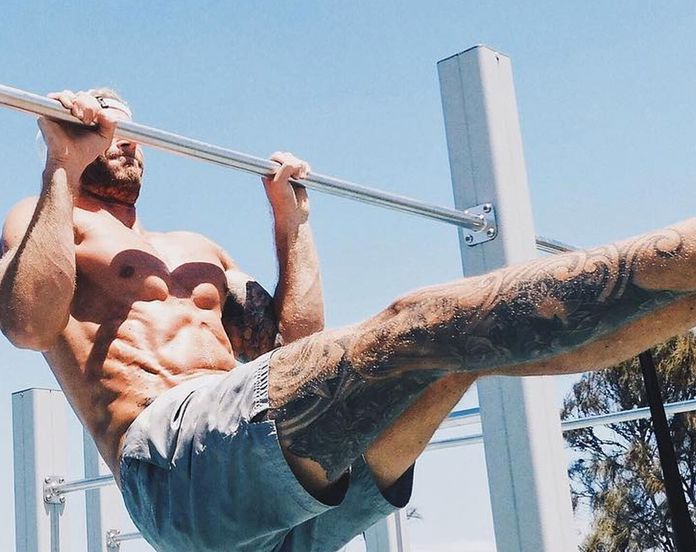
Best Sets and Reps for Beginners
If you’re a beginner to exercise, specifically calisthenics, you’ll need to start with a lower amount of reps per set until you build the strength and endurance required to perform a certain move for longer.
The number of reps you can perform will depend on the exercise. For example, you may be able to perform five push-ups fairly comfortably before you reach the point of muscle fatigue, but one dip on parallel bars might be the only rep you can manage.
As a general rule, aim for around two to three sets of 10 to 12 reps of less intense calisthenics exercises such as squats, lunges, or sit-ups with a rest of 30 seconds to a minute between sets.
Choose two exercises per muscle group to form a whole body workout. Some people choose to split their workouts into upper body and core one day and legs the next. However, this is personal preference, and it’s no issue doing them all in a day.
For more intense exercises such as burpees or mountain climbers, aim for around five reps per set, depending on your ability, with a longer rest between sets of about two minutes.
As a beginner, it’s unlikely that you’ll be able to perform high bar exercises such as chin-ups, pull-ups, or muscle ups. However, you can work on building the upper body strength required to perform these kinds of moves.
Doing dead hangs on a bar, where you don’t lift your body weight, is a great way to build up this strength. Hold for as long as your muscles will allow until they fatigue.
As you get stronger and your muscle endurance increases, you’ll find that reaching the lower set number gets much easier.
Once you reach this point, gradually increase the number of reps per set over time. Listen to your body and learn when to stop once you get muscle fatigue when you can’t perform another rep.
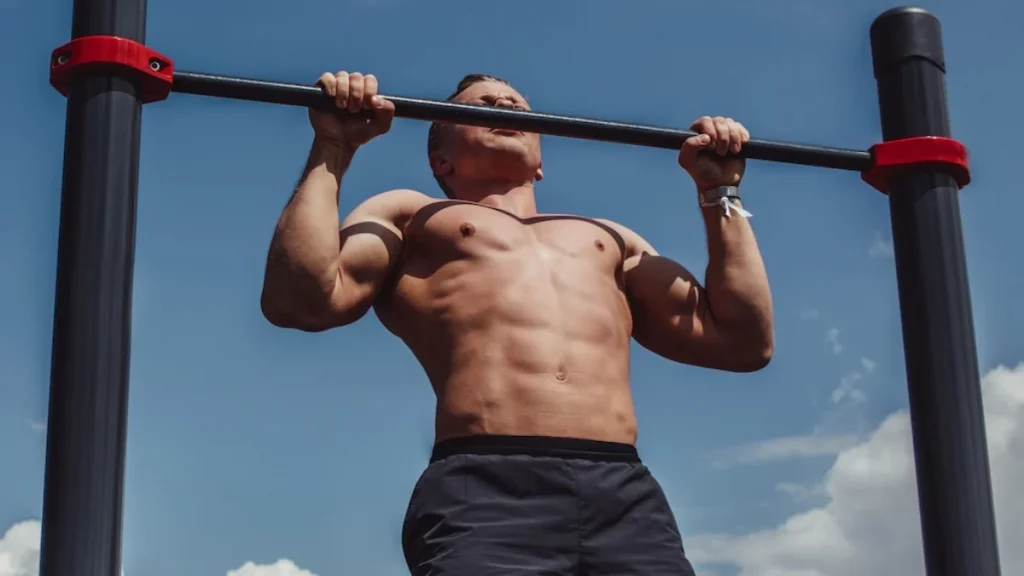
High Bar Calisthenics Sets and Reps
Once you’re at the stage where you can comfortably pull up your body weight on the high bar, you can start incorporating reps and sets into your routine.
This kind of exercise is considered more intense, and it might take some time to build up to the point where you can perform ten or more reps.
Start with five to ten reps of pull-ups or chin-ups or until your muscles fatigue (which may be less than five reps). Over time and once your muscles allow, work up to between five and ten per set (or even more).
If you can perform another set, allow a rest period of around two minutes before starting the next set.
Pulling up your own body weight is an excellent way to improve muscular endurance, which will help you increase the number of reps you can perform in various kinds of activities.
Can High Reps in Calisthenics Build More Muscle?
WebMD says that you can build greater muscle strength with higher reps and lower resistance as well as higher resistance. However, the key to achieving maximum results is to take your reps to the point of muscle fatigue.
So, the number of reps isn’t that important, providing the muscle fibers are fully engaged to promote growth.
For the best results in calisthenics, you need to do enough reps until the muscle groups you’re working on reach the fatigue stage before moving on to the next muscle group.
There will be times when performing high reps isn’t possible because the activity is too intense, but there are many less intense calisthenics exercises that you can do more of with relative ease.
The beauty of calisthenics is the exercises you can perform can all be adapted to make them easier or harder, which means there’s a vast array of moves you can choose from to work on all areas to maximize results.
Calisthenic Exercise Sets
If you’re looking for inspiration on the types of exercises that you can incorporate into your calisthenics workout, below are just some of the moves you could add to your routine.
Remember, there are no hard and fast rules about which exercises you do. Calisthenics is all about going freestyle, so just do what you enjoy and focus on as many muscle groups as possible.
Upper Body
Here are some ideas for calisthenics exercises that work the upper body, including the arms (hands & wrists), shoulders, chest, and back.
We’ve listed them in order of lower to higher intensity:
- Regular Push-Ups
- Raised Push-Ups
- Dips
- Pull-Ups
- Chin-Ups
- Muscle-Ups
- L-sits (Pull-Ups or Chin-Ups)
- Handstands
Core
Many calisthenics moves engage the core muscles, but here are some exercises that are particularly good for building core strength:
- Sit-Ups and Crunches
- Burpees (also a full-body workout)
- Mountain Climbers
- Planks
Legs and Glutes
The legs often get neglected during a calisthenics workout, so here are some ideas to make sure you’re incorporating leg activity into your routine:
- Calf Raises
- Squats (various types)
- Squat Jumps
- Lunges (various types)
- Leg Raises (lying or using bars)
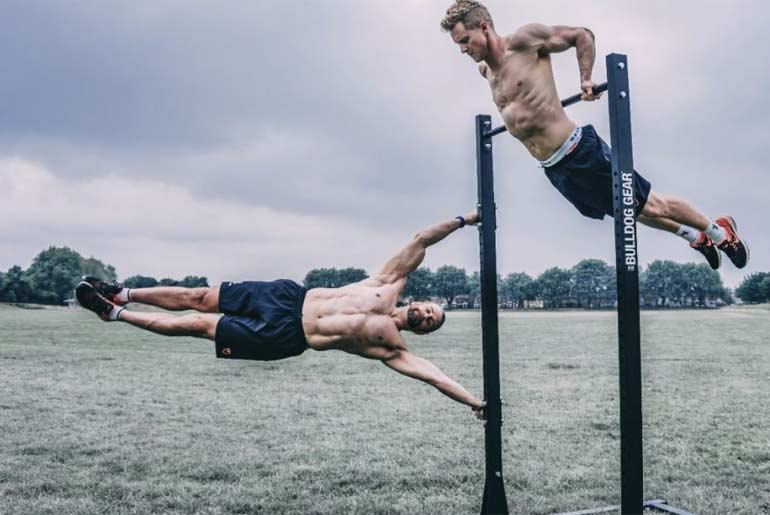
Conclusion
To conclude, here are the key takeaways from the expert advice relating to the best sets and reps during a calisthenics workout:
- The average number of reps recommended by experts is 12-15 per set and two to three sets per exercise.
- Aim for around two exercises per muscle group if you’re new to calisthenics.
- Beginners will need to start with 10-12 reps per set but may only manage one to five if the exercise is intense.
- Reaching muscle fatigue is more important than specific numbers because it means you’re encouraging muscle growth.
- Performing high reps in calisthenics can be good for maximizing results.
- It’s harder to perform a greater number of reps on the high bar and it will take time to reach levels where you can complete a good amount of reps.

